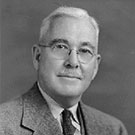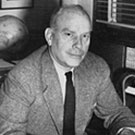UC Davis first opened its doors as the University Farm at Davis in October 1908 to provide farmers’ short courses from the University of California. Over the next decade and a half, the campus grew in mission from simply offering practical opportunities for young farmers into a four-year institution prepared to educate California’s future leaders.
Following is a list of the campus’s chiefs since UC Davis first transitioned to a four-year institution in 1922.
Directors

Claude B. Hutchison: 1922–1924
Hutchison ushered in a new era as UC Davis became a four-year institution of its own merit in 1922. Overseeing the development of the university as we know it, he helped move the campus toward greater academic respectability and helped distinguish it from UC Berkeley.
Walter L. Howard: 1924–1937
Continuing the period of growth begun by Director Hutchison, Howard worked to bring the campus up to par with the university’s rising academic standing. By commissioning the revitalization of a stagnant branch of Putah Creek, Howard paved the way for the now-breathtaking UC Davis Arboretum.

Knowles A. Ryerson: 1937–1952
Ryerson was known to embody the “Cal Aggie Spirit” of gregarious friendliness and concern for individuals. Continuing Director Howard’s work in beautifying the UC Davis campus, he formed the Arboretum Committee to take on the laborious tasks of plowing, planting and cultivation, the fruits of which we see to this day.
Provost
Stanley B. Freeborn: 1952–1958
In honor of his research of malarial mosquitoes, Freeborn has a species of the insect named after him (Anopheles freeborni). A onetime chair of the Division of Entomology at UC Davis, Freeborn served as an assistant dean at UC Berkeley from 1935 until 1952. That same year, he finally received much-deserved recognition when he was named the Davis campus’s first provost.
Chancellors
Stanley B. Freeborn: 1958–1959
In 1958, as the Davis campus anticipated achieving another academic milestone, Freeborn was appointed the university’s first chancellor, serving for a year until he retired in 1959.
Emil M. Mrak: 1959–1969
Mrak’s outgoing spirit and vitality energized the campus at a time of unprecedented growth. Even with the daunting fivefold increase in the student population in less than 10 years, Mrak built universal goodwill for UC Davis with his legendary hospitality and concern for people.
James H. Meyer: 1969–1987
Remembered as the “temperate leader” of UC Davis, Meyer helped the university survive the restlessness of the 1970s with little damage and many improvements. In 1969, the newly elected chancellor assured a crowd of several thousand protesting students: “I am with you,” he said, cementing himself in university history as the chancellor who kept the peace.
Theodore L. Hullar: 1987–1994
Believing that changes were needed to bring the campus to full stature beside its UC peers, Hullar took steps to initiate a full review and to develop recommendations on research policy. His idea of change also extended to encouraging multiculturalism on campus.
Larry N. Vanderhoef: 1994–2009
Vanderhoef took the reins at UC Davis during an era when state revenue dipped and big cuts were made to the University of California budget. With tenacity and commitment, Vanderhoef built a vision and carried it out for the campus as finances improved. With that improvement came the building boom of the 1990s. Vanderhoef continued to encourage growth and community, leading UC Davis’ climb up the ranks of the nation’s finest universities while helping to open the campus’s doors to the disadvantaged. He also advocated academic diplomacy to help resolve global conflict. Vanderhoef became one of the nation’s longest-serving university leaders and is widely credited for mentoring future university presidents and provosts.
Linda P.B. Katehi: 2009–2016
As the university’s first female chancellor, Katehi brought more diversity to campus, hired top talent to propel Davis’ stature and excited the faculty with big research ideas and the money to fund them. Under her leadership, UC Davis completed its first comprehensive fund drive, raising more than $1.1 billion from nearly 110,000 donors a year ahead of schedule.
Gary S. May: 2017–present
May challenges students to do good in the world, champions equal access to education and promotes diversity and mentoring among students, faculty and staff. His top priorities include a university-wide strategic plan to achieve preeminence and a technology-focused “innovative ecosystem” in Sacramento to leverage the assets of the city, UC Davis and the region’s business community.